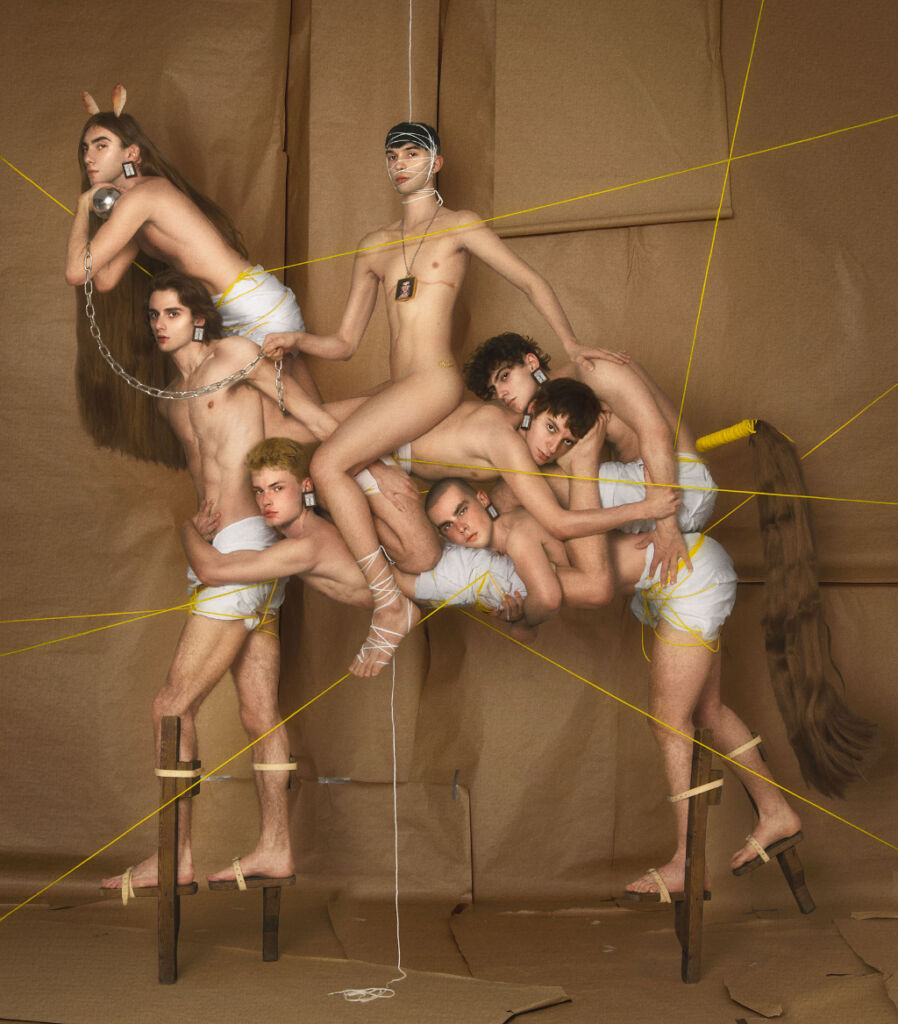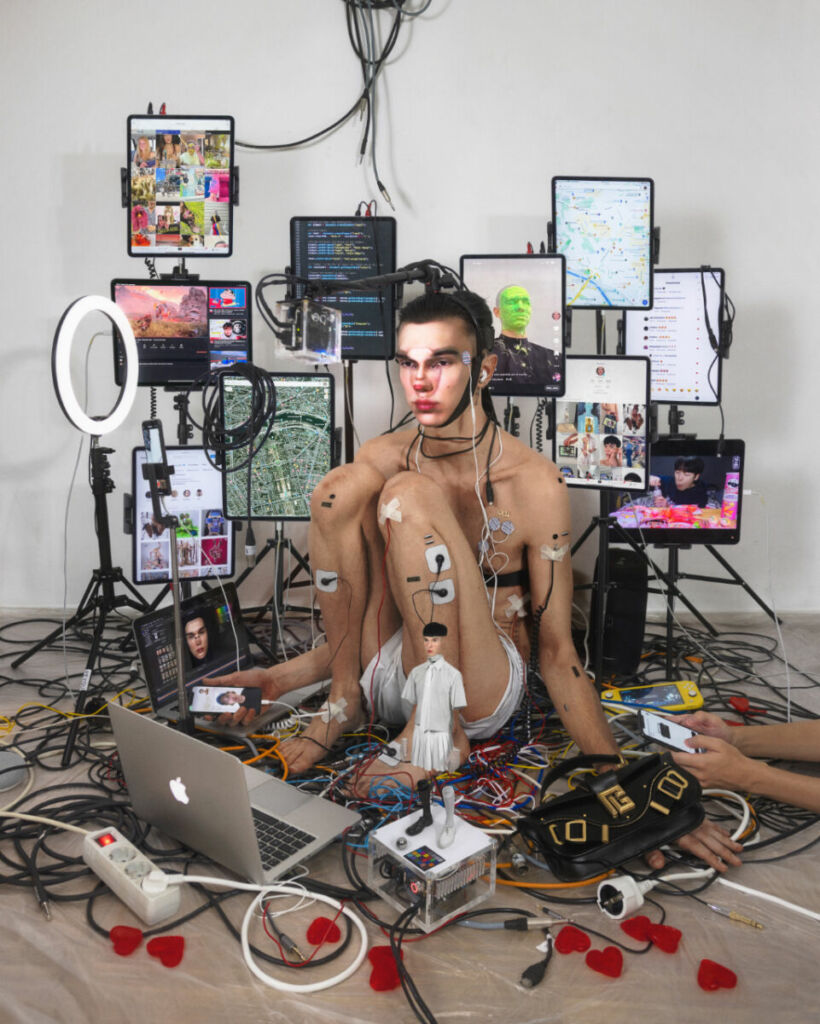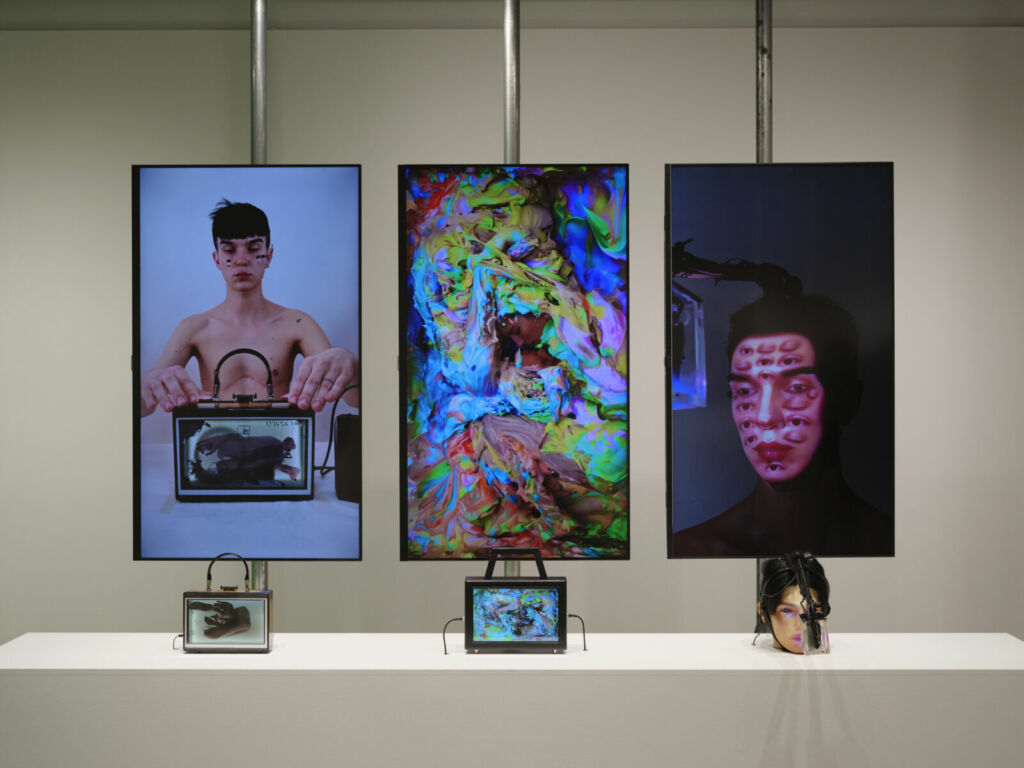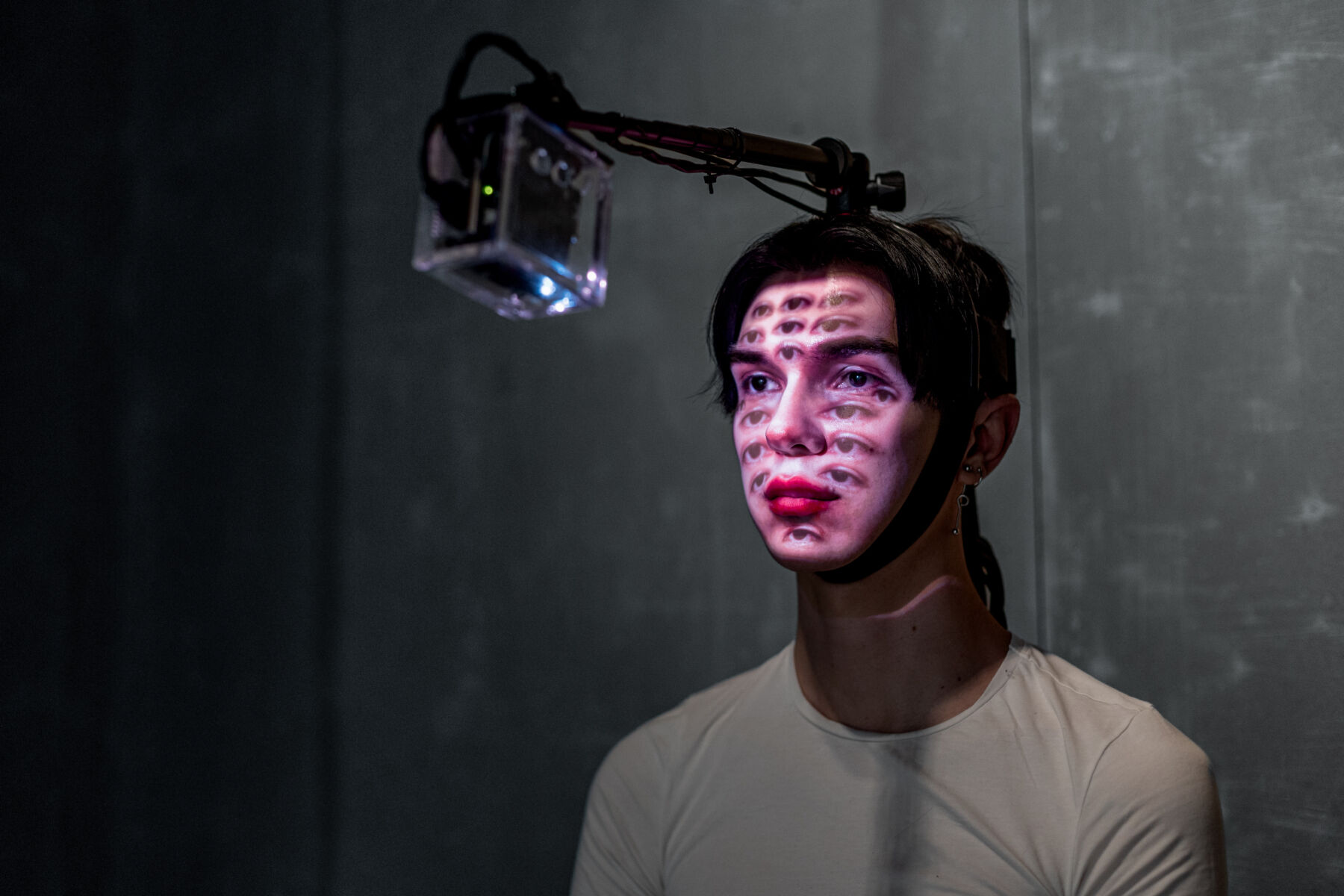Interview by Charlie Clark

Earlier this year, in Tokyo’s PARCO Museum, a slick display of technologically inspired installations, prints, and wearables took centre stage as filip custic, the Spanish-Croatian contemporary artist, presented his solo debut in Japan with the enigmatic exhibition human product, the exhibition was a collaboration between colección SOLO, an international artistic support project based in Spain, and PARCO Museum. Known for his multi-dimensional expressions that reflect the intersection of capitalism and technology on human existence, custic’s work has gained global recognition through collaborations with iconic names such as Rosalía, Gucci, Carolina Herrera, and Louboutin.
But what sets custic apart from the rest is his uncanny ability to fuse the commercial with the conceptual, in so doing, pushing the boundaries of traditional artistry. Far from compromising his creative integrity, his success in the commercial realm further elevates the depth of his work. custic’s proficiency in technique lends flawlessness to his art, rendering it unique in the digital landscape. Drawing inspiration from art history’s masters while simultaneously venturing into new territories of futuristic imaginings, he crafts a striking aesthetic that reverberates with authenticity.
human product delivered a thought-provoking exploration into the commodification of the human body through the lens of technology. Ever the techno-optimist, custic intertwines his subjects within the four corners of screens, symbolising the ubiquity of digital interfaces in our daily lives. In a captivating interplay of mediums, figures emerge from tangled webs of wires, while face-mapping projectors blend identities into a surreal amalgamation.
Hailing from a fashion background, custic incorporates screens into handbags, transposing everyday objects with captivating images. Witness queer lovers covered in fluorescent paint on one screen, and an obscured figure doodling, caught on camera on another. The allure of custic’s work extends beyond these frames and installations into the realm of performance. One such recent project saw custic’s muse and collaborator, Virgen Maria, donning uncanny masks of their own faces, smothering themselves in fluorescent goo whilst taking selfies. The masks transformed the performers into doll-like subjects, moving awkwardly with expressionless faces, enhancing the sense of hyperrealism that pervades custic’s world.
filip custic platforms a vision of a futuristic existence intertwined with technology and the far-reaching ramifications of consumer-driven societies. We asked him some questions to find out more about the work.






Please introduce yourself and your practice to our readers.
I’m filip custic and I can classify myself as an artist. I can say that I love to invent and the concepts that inspire me are existentialism, capitalism and the system we live in. I like to question myself: who are we, where do we come from, and where are we going with the direction we are taking?
Technology plays a central part in your work as a tool and motif in the resulting images and installations. In what ways do you see technology as shaping not only our bodies but also our identity more widely?
Technology is a tool. It can be negative or positive depending on how it is used. It is true that technology is a human invention and is, therefore, a reflection of ourselves. My generation lives with the networks of the era of dysmorphia, generating mental health issues. However, in my artistic practice, I use technology as a tool to celebrate the diversity of who we are. I did it, especially in the interactive sculpture pi(x)el or my series of screen bags exhibited at the PARCO Museum in Tokyo. These are works where technology helps to expand identity.
There is a clear classical style and art historical influence that informs your work. For example, the Bosch-like figures in ‘overthinking myself’ and the reference to Ghirlandaio in ‘reinterpretación del retreat de la Giovanna Tornabuoni’. What artists and styles from art history do you return to and why?
For a while, my creativity was inspired by past masters such as Nicolas Tesla, DaVinci, Raphael and many others. Because at that moment, I needed to know more about the past to project myself into the future. Nowadays, however, I like to reflect and think about what is coming in the future. At the moment, I am more inspired by what the future might be. I have studied the past a lot, and it has given me a lot of information, very inspiring, but at the moment, I am inspired mainly by hypotheses about the future.
Also central to your work is exploring internet culture, a communication, exchange and uploading tool. Yet visually, the image of the body as a site of exchange appears repeatedly in your installations and digital work. Why is the body an essential part of your visual language and process?
We live in the age of dysmorphia, and I want to talk about the importance we give to the body. I have worked for a long time in fashion and with aesthetic standards that no one has instilled in me; it has been me, conditioned by the world in which we live, who has come to retouch a body and elevate it to a super-idealisation and almost god-like textures. This elevation is very cool, but I’m looking for something more realistic in my projects.
We’ve idealised beauty concepts making them unattainable and making them a cause for suffering. So, to compensate for it, I have to show more realistic beauty, without retouching, raw and diverse. I’m looking to “reprogram” myself. Now I try to show beauty as it is: earthly beauty, beauty without filters, non-virtual beauty (even if it is told through technology), but raw beauty.
In your recent exhibition, ‘human product’, at PARCO museum in Tokyo, you play with the motif of the screen a lot. It’s projected onto a synthetic face, set into a handbag, and multiplies explosively around one figure in an installation. Nowadays, we are all so screen locked. What do you think the significance of the screen is nowadays, given its ubiquity?
As mentioned, technology and screens can be positive or negative tools. It depends on the use. Screens can give us ubiquity, but they can lock us in. The key is to learn how to use them so that they allow us to live better, respecting our diversity and who we each are. I can transform myself into a better person through technology. For example, In my work, screens become a canvas to defend the diversity of who we are. For instance, in the bags with screens, I dedicate the bag’s central part to celebrating the diversity of sexual choices. With my message on the screen, I occupy the area big brands use to place their logo on their bags.
The exhibition also features a lot of masks and doll figures. How do these elements of the artificial tie into your exploration of the relationship between the body and technology?
They are two elements that form part of my artistic practice. On the one hand, the masks allow me to generate doubt about my identity. Is it a robot? Is it someone virtual? Is it a human? It creates a mystery: Who is behind it?
As for the dolls, it is another medium to express my artistic practice around identity and the body. In particular, it is a project that connects with the message of the exhibition in Tokyo at the Parco Museum, where I talk about the commercialisation of who we are and connects with the culture of collecting, which is so strong in Japan.
You couldn’t live without…
My dog.
What gets you up in the mornings?
If we speak metaphorically, what wakes me up every day is the inspiration and my interest in learning new skills. If we stick purely to reality, it is the mobile phone alarm.






